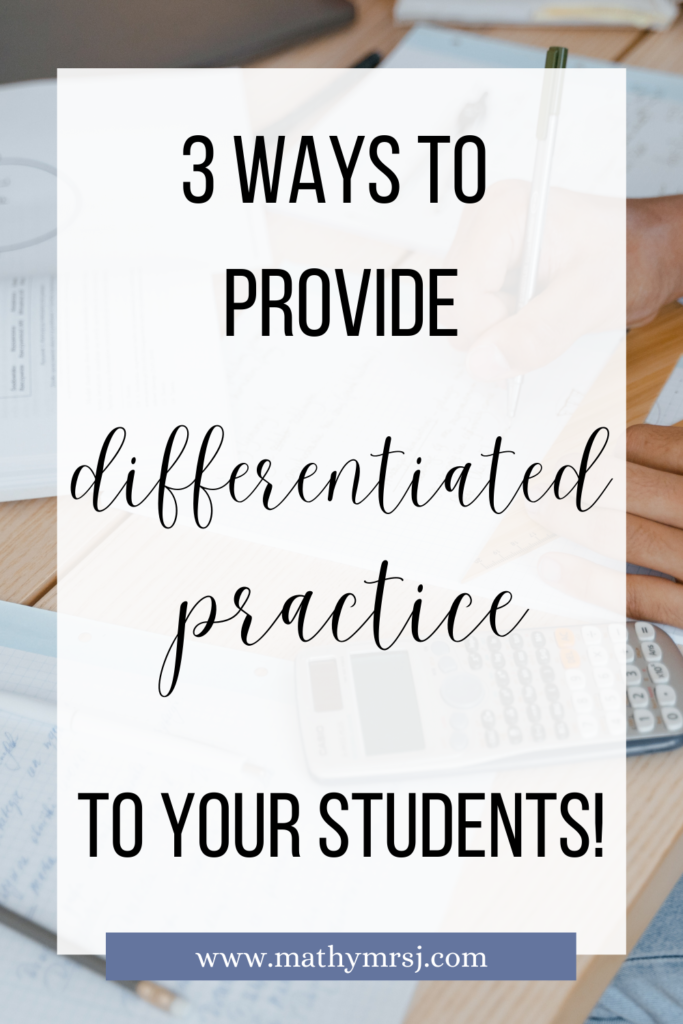Want access to my FREE resource library? Click here to join!
Every year in my classroom I found a need to provide differentiated practice in my math class. It varied from year to year, but I had students at varying levels of comprehension and confidence no matter what, and those kids needed different types of problems and different amounts of help. It’s a difficulty we all face as teachers, but here are 3 ways to offer differentiated practice in math class!

Give Students Choice
Giving students options to choose from puts the power back in the students’ hands and allows them to take control of their learning and assessment. Instead of “you must do these problems” it becomes “I’m choosing the problems I think I can do”! Would we like students to do a hundred percent of the problems and ace them all? Of course! But more than that, we need students to feel safe when attempting to demonstrate their learning. Giving them choices hands that safety to them.
Offer Multiple Difficulty Levels
Let students know how hard a problem is going to be ahead of time, so they’re mentally prepared for the task. I find it helpful to ask students to assess their understanding on a stoplight. When I first began teaching I had students tell me (by raising their hand, anonymous polls, etc.) if they were at a red, yellow, or green light on the topic. Then, we decided the stoplight needed some nuance, so we added intermediate colors and it looked like this:
- Red Light: I am mentally still asleep at home right now.
- Orange Light: I’m not quite 50% of the way there, but I understood at least some of what was taught.
- Yellow Light: I have a so/so understanding of the topic.
- Lime Green: I feel pretty good about the topic. (Lime green is a combination of yellow and solid green 🙂)
- Green: I completely understand this topic!
So, after asking students to check-in with themselves, they can then choose a problem to practice that’s appropriate for their level of understanding. We love a metacognition moment!
This pairs perfectly with my stoplight task cards – available for sale in my TpT Store!
Low Floor/Low Pressure in Differentiated Practice
We’ve all heard of low floor/high ceiling, which is an excellent way to differentiate your classroom activities, but I find another element to be pretty important: Low Pressure. Especially when students are practicing their knowledge (i.e. homework, daily activities) the key is to keep things low-key! Remind your students (and yourself!) that we’re just PRACTICING! We’re getting the hang of something new, and that’s sometimes scary. So keep things relaxed and low-pressure when differentiating your instruction.
What are some mentalities that you use when differentiating instruction in your classroom? Let’s continue the conversation in the comments, or reach out on my social media: @mathymrs.j on IG.
Don’t forget to request access to my FREE resource library – click here!

